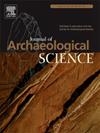少即是多:限制多同位素分析的半侵入性采样,增加单一等分样品的数据输出
IF 2.5
1区 地球科学
Q1 ANTHROPOLOGY
引用次数: 0
摘要
现在,多同位素应用的发展使研究的考古和古人类标本能够产生直接和精确的生活史数据,对牙釉质的分析在深时间保存背景下证明特别强大。然而,所需的样品材料数量的增加往往会损害样品的结构完整性。因此,寻找最小化半侵入性采样同时最大化生产数据的方法变得越来越重要。在本研究中,我们研究了优化样品使用的方法,用于最先进的珐琅结合锌(δ66Zn)同位素测量,这是一种在多同位素考古研究中越来越常用的方法。我们表明,某些脱溶雾化器引入系统可以使用不到通常样品大小的一半,以高效率和准确性测量δ66Zn。此外,我们证明,经过典型预处理(δ13C和δ18O)的牙釉质碳酸研究的剩余样品可以安全地使用,而不会改变δ66Zn值。同样,我们强调锌色谱中经常被丢弃的基质部分可以用于进一步的分析,例如87Sr/86Sr比率的测量。我们的结果强调了从标本中提取最大信息的可能性,同时完全避免或显着减少半侵入性采样。本文章由计算机程序翻译,如有差异,请以英文原文为准。
Less is more: Limiting semi-invasive sampling for multi-isotope analyses and increasing data output from single aliquot samples
Developments in multi-isotope applications now enable the production of direct and precise life history data of studied archeological and paleoanthropological specimens, with analysis of tooth enamel proving particularly powerful in deep-time preservation contexts. However, the increasing amount of sample material necessary too-often compromises the specimen's structural integrity. Finding ways of minimizing semi-invasive sampling while maximizing produced data thus becomes increasingly crucial. In this study, we examine ways of optimizing sample use for state-of-the-art isotope measurements of enamel-bound zinc (δ66Zn), an increasingly used method in multi-isotope archeological research. We show that certain desolvating nebulizer introduction systems can be used to measure δ66Zn with high efficiency and accuracy using less than half the usual sample size. Moreover, we demonstrate that remaining samples subjected to typical pretreatments used for tooth enamel carbonate (δ13C and δ18O) studies can be safely used without alterations to δ66Zn values. Similarly, we highlight that the often-discarded matrix fraction from zinc chromatography can be utilized for further analyses, such as measurements of 87Sr/86Sr ratios. Our results underscore the possibility of extracting the maximum information from specimens while altogether avoiding or significantly reducing semi-invasive sampling.
求助全文
通过发布文献求助,成功后即可免费获取论文全文。
去求助
来源期刊

Journal of Archaeological Science
地学-地球科学综合
CiteScore
6.10
自引率
7.10%
发文量
112
审稿时长
49 days
期刊介绍:
The Journal of Archaeological Science is aimed at archaeologists and scientists with particular interests in advancing the development and application of scientific techniques and methodologies to all areas of archaeology. This established monthly journal publishes focus articles, original research papers and major review articles, of wide archaeological significance. The journal provides an international forum for archaeologists and scientists from widely different scientific backgrounds who share a common interest in developing and applying scientific methods to inform major debates through improving the quality and reliability of scientific information derived from archaeological research.
 求助内容:
求助内容: 应助结果提醒方式:
应助结果提醒方式:


